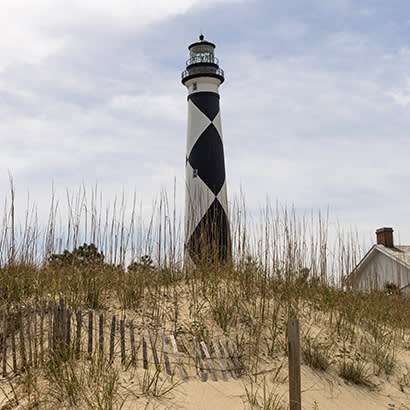
For an enhanced digital experience, read this story in the ezine.
Our lands and waters are changing rapidly. Climate change, urban growth and increasing human demands on resources are reshaping the landscape. As we grapple with understanding these rapid changes and the negative impacts they have on our most vulnerable neighbors, it’s easy for any one person or organization to feel helpless to do anything about it. That’s why the Southeast Conservation Adaptation Strategy (SECAS) is working to harness the collective resources and brainpower of the broader conservation community to develop and implement a cross-boundary plan that matches the scope and scale of the challenges we face.
SECAS is a regional conservation initiative spanning 15 states and two territories across the southeast United States and the Caribbean. One of the major products of SECAS is the South Atlantic Conservation Blueprint. This blueprint is a living spatial plan to sustain natural and cultural resources for current and future generations in the face of future change. It spans parts of six states, from Virginia to Florida, including U.S. waters extending 200 miles offshore. The blueprint prioritizes the lands and waters of the South Atlantic based on the current condition of terrestrial, freshwater and marine indicators. Through a connectivity analysis, it also identifies corridors that link coastal and inland areas and span climate gradients. The blueprint reflects extensive feedback from the conservation community, with more than 700 people from more than 200 different organizations actively participating in its development so far. The South Atlantic Conservation Blueprint integrates with neighboring priorities as part of a larger, regionwide plan called the Southeast Conservation Blueprint.
Changes to the Blueprint
Unlike many spatial planning efforts, the blueprint is regularly updated and revised to incorporate the best available science and input from partners across the region. During the most recent South Atlantic Conservation Blueprint revision, we added a new cultural resource indicator to highlight areas where highly socially vulnerable communities would benefit from the development of a new park.
This equitable access to potential parks indicator was inspired by data from the Duke Nicholas Institute that shows where people across the Southeast lack park access within a 0.5-mile, 5-mile and 10-mile radius. Its analysis found that across the Southeastern United States, about 40.5 million people live more than a 0.5 mile from a park. That lack of access can be tied to many injustices beyond lack of recreation space. Parks and public green spaces provide myriad ecosystem services — such as reducing heat islands and energy burdens, reducing risk of flooding, and improving air quality — and also have been linked to improvements in physical and mental health.
Through our collaborative review process, our staff convened a group of experts to determine the best way to incorporate the Duke data into the 2021 South Atlantic Conservation Blueprint. In an attempt to apply the data more equitably across the landscape, we prioritized park access within census blocks that are within the 90th percentile of social vulnerability, according to the Centers for Disease Control and Prevention’s Social Vulnerability Index (SVI). Social vulnerability refers to the potential negative effects on communities caused by external stresses on human health. Such stresses include natural or human-caused disasters, or disease outbreaks. The SVI incorporates a range of demographic data to determine an overall vulnerability score. In our first version of this indicator, we applied the Duke data to the highly socially vulnerable communities to emphasize the importance of developing parks in these areas.
While we recognize that the first version of this indicator is far from perfect, our staff is excited to think more intersectionally about the way we do conservation in the Southeast and already plan to expand this indicator to the wider Southeast Conservation Blueprint in 2022. The SECAS vision is a connected network of lands and waters that supports thriving fish and wildlife populations and improved quality of life for people. We believe a collaborative, landscape-scale approach is our best chance to make that vision a reality.
Share Feedback
Learn more about the Atlantic Conservation Blueprint, the Southeast Conservation Blueprint and access the data, by visiting our website. If you’re interested in using a blueprint for an upcoming grant proposal, planning effort or project, please feel free to reach out to me directly. And, if you find that the blueprint doesn’t meet your needs, please share that as well — that crucial feedback drives improvements to the blueprint, so we can collectively design and achieve a conservation future that truly benefits all.
Alex Lamle is Blueprint User Support Specialist for Southeast Conservation Adaptation Strategy.

